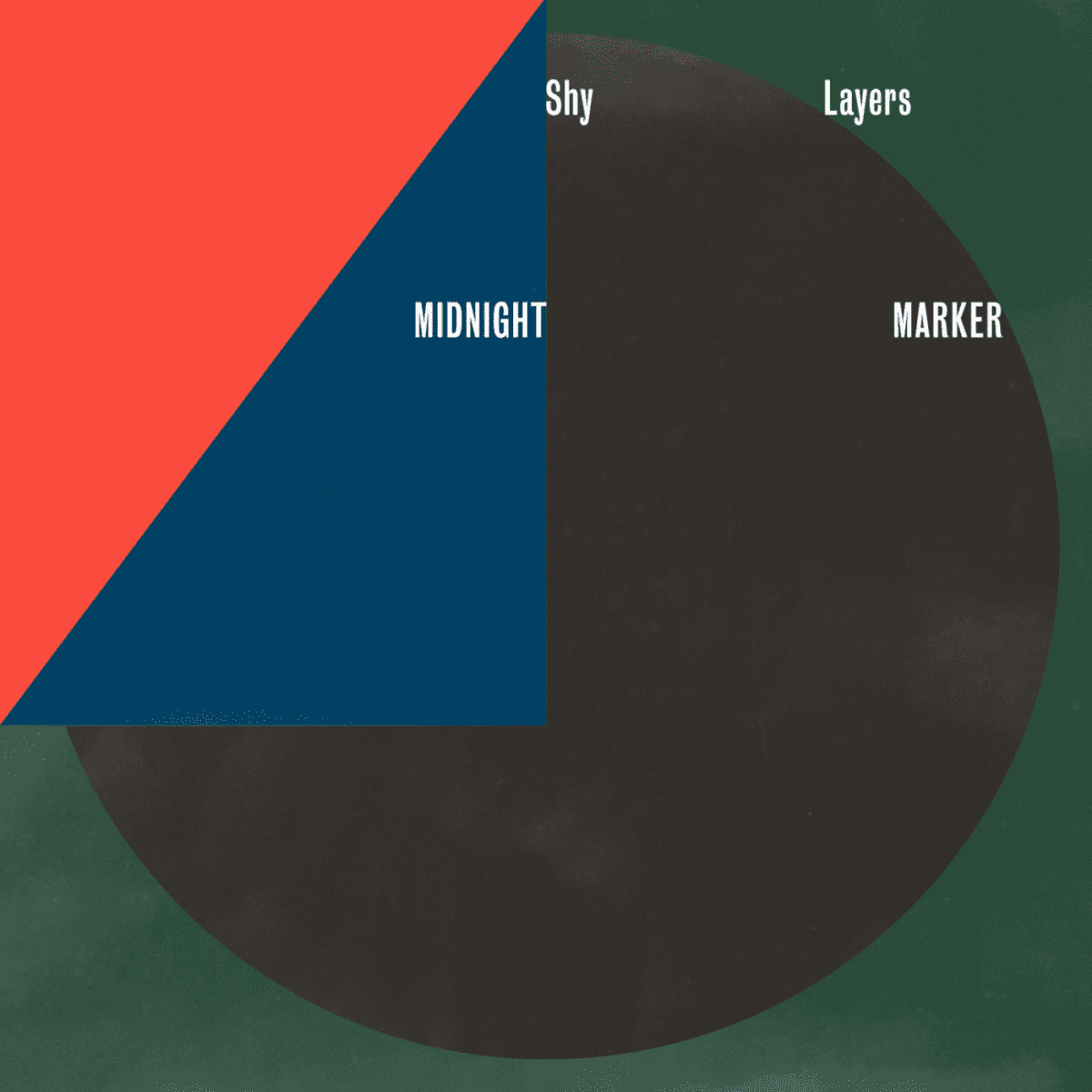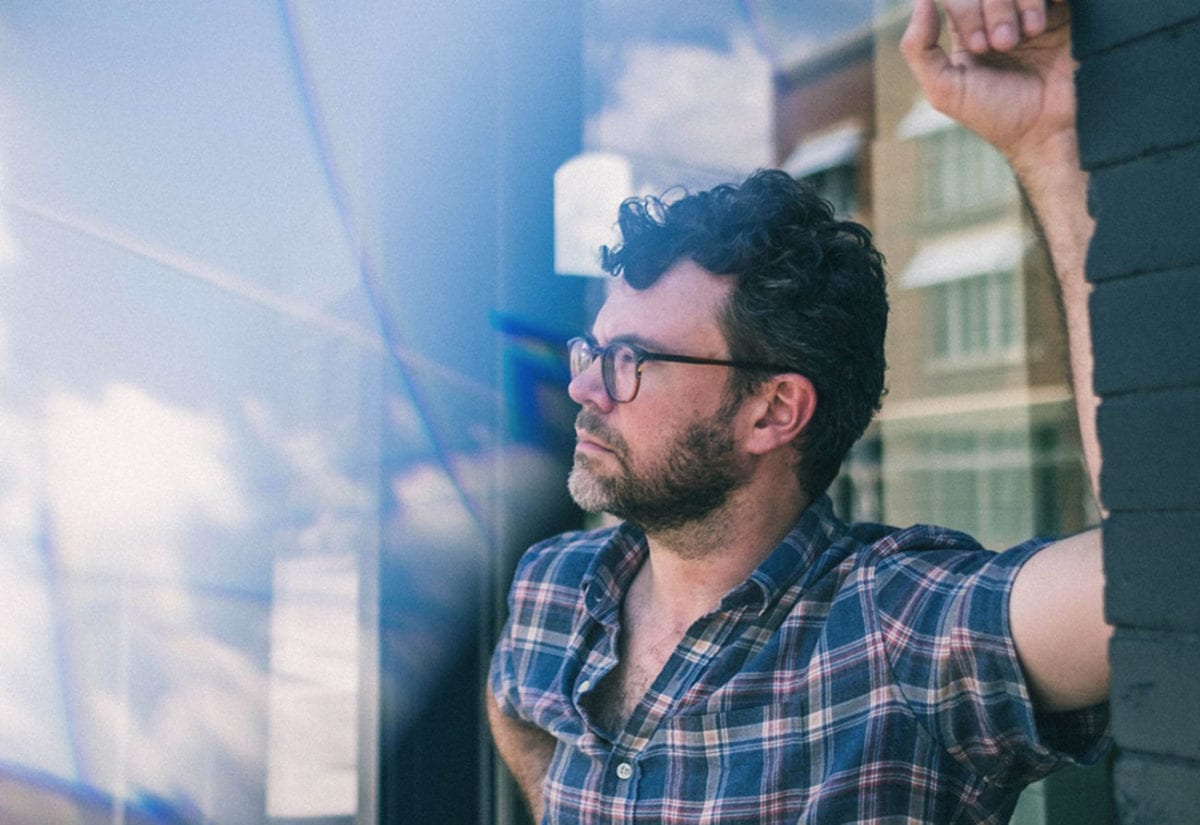
From modular improvisation to vocalists recruited through Craigslist, Shy Layers ‘Midnight Marker‘, released May 25th on Tim Sweeney’s Beats In Space, had an unusual creation.
The record is a work of off-kilter optimism. A moment of pure escapism that looks both forwards and back to evade the quotidian and mundane. Shy Layers’ (aka visual artist JD Walsh) music is born from electronics, but the synthesised sounds have been smoothed out and glazed over with acoustic warmth, creating 10 tracks of free floating, vocoder tinged soul.
Ranging from trippy instrumental grooves to aching, Luther Vandross inspired pop, ‘Midnight Marker‘ feels like it is both chasing the bright lights and looking to withdraw to its own private headspace. Here, Shy Layers speaks to Inverted Audio about the record’s creation, and shares album track ‘15 and 4‘.
Interview by Daryl Worthington

"I use the modular as a sketchpad, a starting point, and a kind of "random seed". It often provides the germ of an idea [...] It's a way of freeing myself (somewhat) from my own tastes and predispositions when composing - sort of a Dadaist idea."
The press release says ‘modular synthesis was a muse’ for ‘Midnight Marker’. We often seem to link modular synthesis to abstract, experimental and improvised musics. Listening to the record though, that’s a hard influence to detect – everything sounds very organic, richly layered and composed. Can you give us an insight into the process of creating these songs and the role modular synthesis played?
Definitely. I use the modular as a sketchpad, a starting point, and a kind of “random seed”. It often provides the germ of an idea. I often find myself in rabbit-holes with that tool – stumbling across musical ideas that would be impossible for me to plan out ahead of time. It’s a way of freeing myself (somewhat) from my own tastes and predispositions when composing – sort of a Dadaist idea.
It has no memory or presets, and I find these limitations to be freeing while generating ideas. Sometimes I’ll only use small parts of what the modular generates, and other times, once a basic structure is provided, the sounds of the modular will be removed entirely. So even though it’s capable of some wild and innovative sounds, I think it’s just as valuable to me as a compositional tool.
What impact do you think moving to Atlanta had on the record?
I’m not sure I have the perspective yet to say definitively, but I am somewhat sensitive to the environment that I work in. NYC has a certain wonderful saturation to it – you bump up against humanity every day, the arts are everywhere… etc. – but other American cities also have this, just expressed differently.
It was helpful for me to see that. Pragmatically speaking, I have more room to spread out and try new things in the studio. I got into creating more complex live systems – for example having different synths controlling each other, more chains, more live experimentation – things that would be more difficult to do in my little art studio in New York.
How was it working with vocalists you’d never met before? How did you choose who to work with?
It’s something that was born out of necessity, but became something I enjoyed doing. When I started this project I just didn’t know many great singers in my immediate friend group, so I thought I’d hire people I didn’t know. So I put ads in Craigslist, both in New York and once I moved to Atlanta. People are generally very receptive to it. I ask for samples and simply choose people whose voices sound like a good fit for the song.
Everyone I’ve recorded so far has been super professional and easy to work with. I suppose it is a bit awkward at first – I’m inviting total strangers to come to my studio after all – but that usually dissipates once we get tracking.
There are real strong echoes of 70s Soul music and 60s Pop floating through the album, in the vocals, but also with the overall warmth and depth of the production – how much was that kind of music an influence?
I’m really glad that’s evident in the album. I listen to all kinds of music (the old cliche) but Soul is something I return to frequently. There’s just something satisfying on so many levels – rhythmically, sonically, emotionally.
When songs can be equally visceral and complex, it’s a sweet spot for me. I’m not sure that my album does this, exactly, but there are certainly moments where it bubbles up – a riff here or there, or in a sonic signature.
‘15 and 4’ comes close to the end of the album. And it has perhaps the most prominent use of acoustic instruments. Can you give us a little background on this track?
Yeah, this one is a good example of the modular as the starting point. You can hear the original modular riff at the end of the track, around 3:00. The song was based entirely around this one phrase – it’s funny in a way that the song grew to have such a guitar-centric profile. “15” and “4” refer to the two time signatures at work in the song, the latter emerging around the halfway point.
At first I worried that it was too repetitive, but I grew to like the slow evolution. Tim Sweeney said that he thought it’s got an E2-E4 vibe – just a lot shorter. I am fine with this comparison.
Any plans to play the album live?
For sure, I’ve got a couple shows in NYC in June (Northside Festival on 6/9 and Output on 6/29). I’m also planning a small performance at the Atlanta Contemporary Art Center in late May. It’s been fun to deconstruct these songs into tracks that are able to be performed, have elements be improvised… etc. I’d also love to perform over in Europe and elsewhere – so stay tuned!
Midnight Marker is scheduled for release 25 May 2018, pre-order a copy from Juno.
TRACKLIST
1. Midnight Marker
2. Gateway
3. Test Pattern
4. Lover’s Code
5. The Keeper
6. Tomorrow
7. No Road
8. Tropical Storm
9. 15 and 4
10. Draw The Shades
Discover more about Shy Layers and Beats In Space on Inverted Audio.